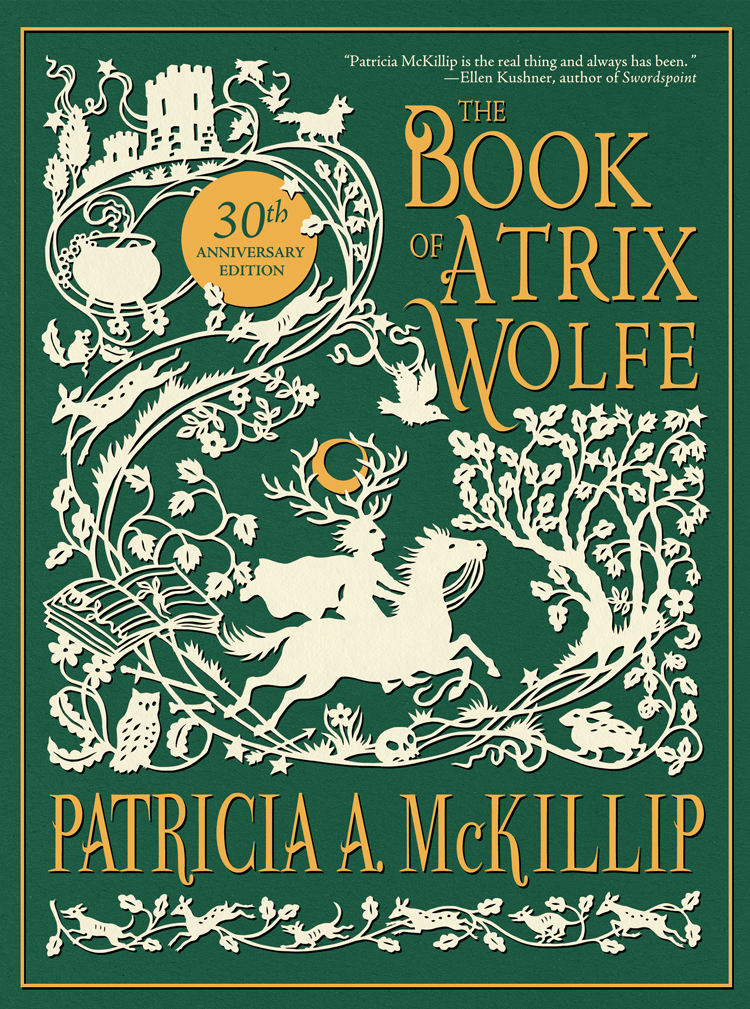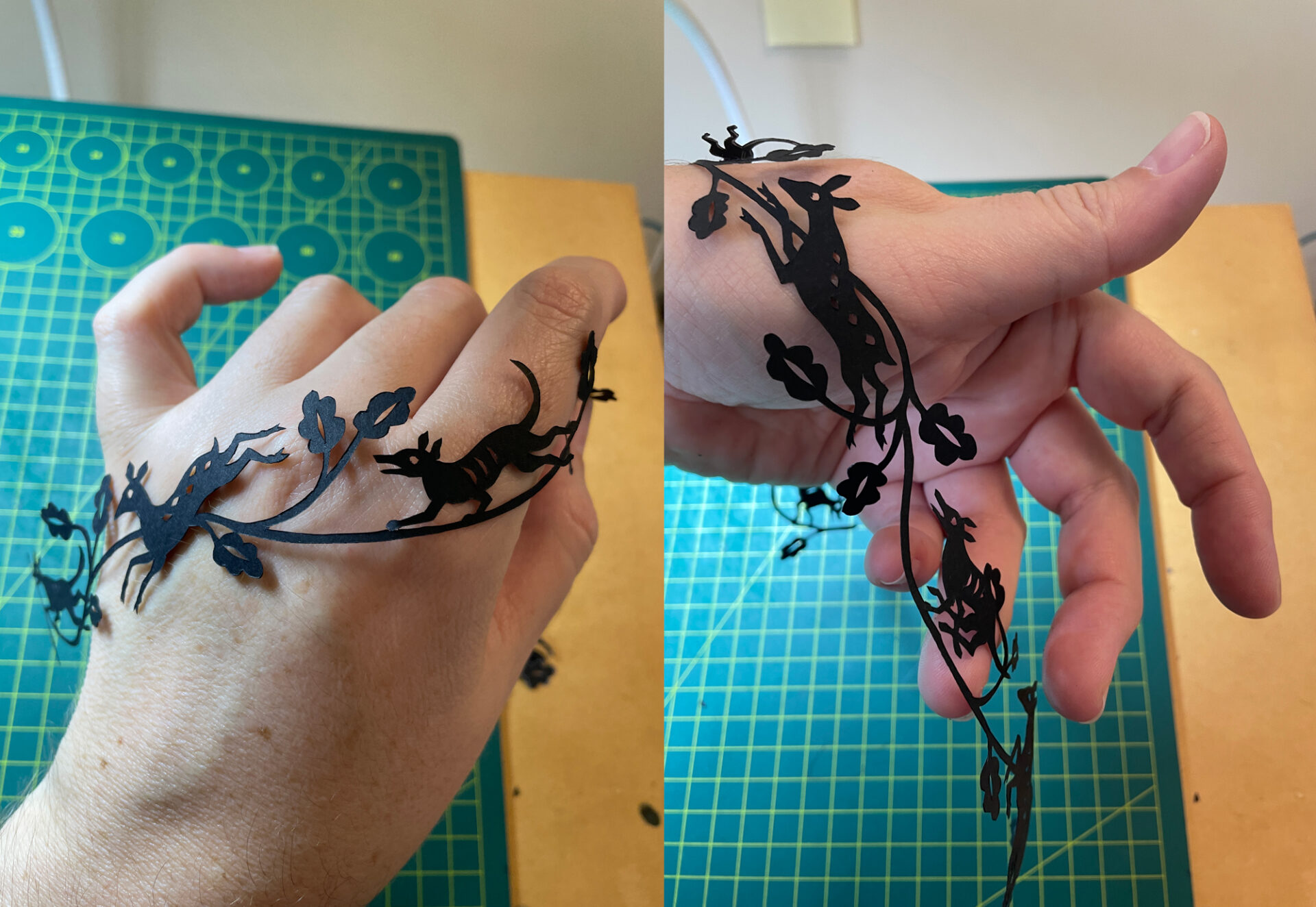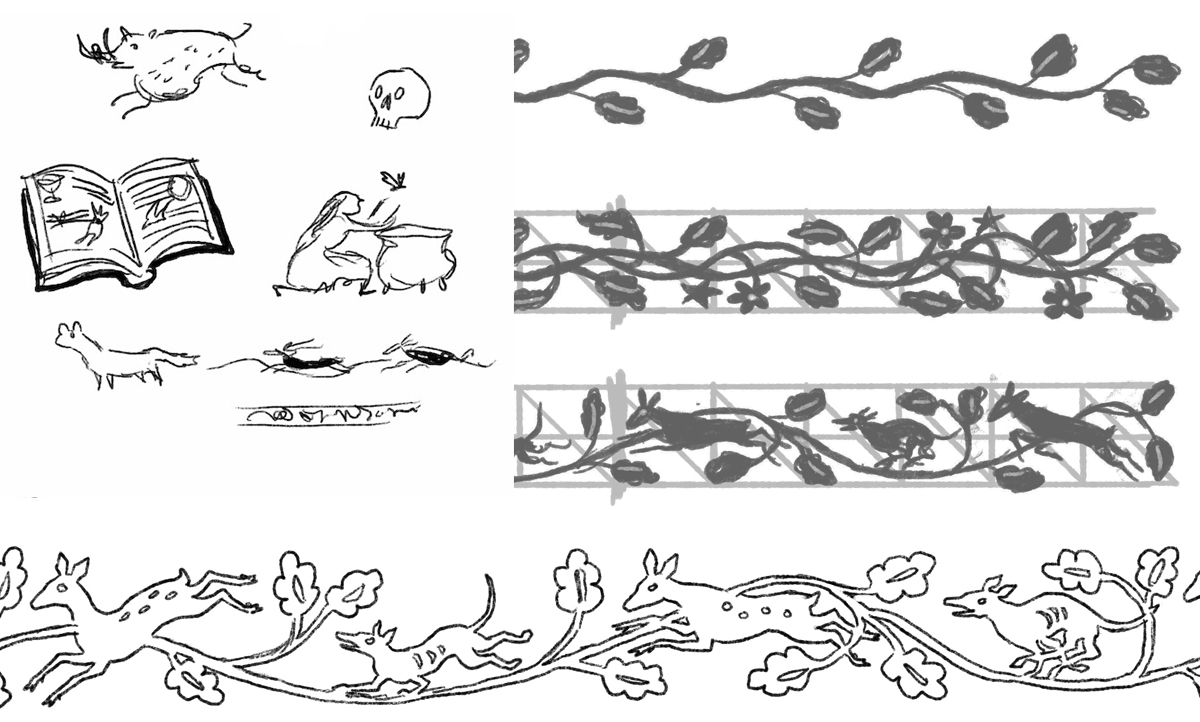
Kathleen Jennings is joining us today to talk about the 30th anniversary edition of The Book of Atrix Wolf. Here’s the publisher’s description:
When the White Wolf descends upon the battlefield, the results are disastrous. His fateful decision to end a war with powerful magic changes the destiny of four kingdoms: warlike Kardeth, resilient Pelucir, idyllic Chaumenard, and the mysterious Elven realm.
Twenty years later, Prince Talis, orphaned heir to Pelucir, is meant to be the savior of the realm. However, the prince is neither interested in ruling nor a particularly skilled mage. Further, he is obsessed with a corrupted spellbook, and he is haunted by visions from the woods.
The legendary mage Atrix Wolfe has forsaken magic and the world of men. But the Queen of the Wood, whose fae lands overlap Pelucir’s bloody battlefield, is calling Wolfe back. Her consort and her daughter have been missing since the siege, and if Wolfe cannot intervene, the Queen will keep a sacrifice for her own.
What’s Kathleen’s favorite bit?

It was such an honour to be asked by Tachyon to illustrate the cover for The Book of Atrix Wolfe — and to write the introduction to it! Of course, I spent a lot of time musing on my favourite (and the most visual) parts of this lyrical, gleaming novel.
My introduction examines McKillip’s words through the frame of the full final silhouette and my art process as a whole, and the tensions and possibilities of filtering a world of white-and-gold shadows through the medium of black paper and a blade. (Of course, Tachyon’s designer Elizabeth Story did a splendid job of pulling it back into that green and sunlit wood.) And I am pleased with how the whole design alludes to a tapestry or illumination, with the whiplash of it, and with the chance to play just a little with layouts inspired by the Kelmscott Press.
But my favourite individual bit of the art? Oh, that’s easy. It’s the tiny border of leaping deer and hounds that run beneath Patricia A. McKillip’s name.
I almost only display other people’s art around my house, but the offcut that surrounded this piece is tacked up above my art desk. I’m pleased with this bit, functionally. Artistic choices always have practical constraints. In this case, some form of border was always intended, to complement Tachyon Publications’ other McKillip editions. Then the length of the paper I had available dictated scale and limited how much detail I could use (I prefer to cut my illustrations as a single piece, where possible). Within that, I could have fun with something that looks at first glance almost purely decorative.
That border echoes and resonates with the world of the book. It sets the larger image aside, both referencing and fencing the story in like McKillip’s constrained enchanted wood. But while it contains elements from the novel, this border does not only embody aspects of the world — it forms an ornament that could appear in it, on a sleeve or a hem or a manuscript. As when I illustrate maps, I like the idea that the illustration exists at a slight remove from our plane, rising up from or luring the reader into the world of the book.
And while it is a decoration, the border does something I find important in an illustration: it has movement, tension, energy. These spring from the rhythms in it — the repeated animals, the waving branch, the hint of cycles and seasons and mythic rituals. There is friction there, too, of course — the horizontal movement of the border also gives a firm edge to the cover, the creatures run against the direction of reading and the growth of the oak leaves, and each beast strikes a slightly different pose, as it might in a zoetrope. All of this suggests ongoing movement beyond the cover, but also captures some of the lively formality of a hunting tapestry, as might be hung on a wall in a bleak stone keep.
There is an appealing functionality to this leaping band, too — not just within the cover and the hint of it within the world. I also illustrate repeated designs (for bedding, wallpaper, and so on), so when I designed this strip I wanted to do so in such a way that it (or something like it) could one day perhaps actually become a repeating border, printed on a bookmark or skirt or embroidered with couched gold threads.
Finally, there is the physical nature of the artwork itself. I love lifting up my silhouettes, once they are complete. They are delicate and yet a lot of the design work goes into giving them a secret rigidity — when it’s most successful, they feel like lightly starched lace. But mostly, compared to this border, the physical artworks are broad and light-shaping and self-contained/ing, like veils. Picking up this length of bounding deer, leaping hounds and oak leaves, is like handling tatting or a fine lace bookmark — it drapes over the hand like a promise of all the stories it could lead to.



LINKS:
BIO:
Patricia Anne McKillip, widely considered one of fantasy’s finest writers, was the bestselling author of more than thirty adult and children’s fantasy novels, including The Riddle-Master of Hed, Harpist in the Wind, and The Bards of Bone Plain. Her short fiction has most recently been collected in Wonders of the Invisible World and Dreams of Distant Shores. McKillip received three World Fantasy Awards, for The Forgotten Beasts of Eld, Ombria in Shadow, and Solstice Wood, for the latter of which she also received the Mythopoeic Award. She was also recognized with the World Fantasy Award for lifetime achievement. Born in Salem, Oregon, McKillip lived in Germany, the UK, and the Catskills in New York.
Kathleen Jennings (cover art) is a World Fantasy Award-winning illustrator and British Fantasy-Award-winning writer based in Brisbane, Australia, in a house where the floor is usually covered with many tiny scraps of paper.
She has illustrated for Tachyon Publications, Tordotcom, Little,Brown, Simon & Schuster, Walker Books, Small Beer Press, Subterranean Press, NewSouth Books, Tartarus Press and many others. Her portfolio is at: kathleenjennings.com and you can find her art printed on objects at Redbubble and on wallpaper and fabric at Spoonflower.
Her books include the Australian Gothic novella Flyaway (which she also illustrated), a poetry chapbook Travelogues: Vignettes from Trains in Motion (a written travel-sketchbook), and the fantasy short story collection Kindling. Her haunted subtropical novel Honeyeater (with silhouette ornaments) will be published in September 2025.
She blogs extensively at tanaudel.wordpress.com and is @tanaudel at most of the usual places.

This book genuinely changed the course of my life, quite by accident.
This was my into to McKillip, followed by a frantic search for everything she wrote. I have soft spot in my heart for this one. Everytime I clean my cast iron pot, I think of the kids eating the crunchy bits off the pan before cleaning them.